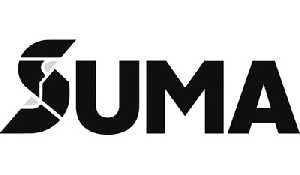Closure of original shafts moved forward by nine months: K1, K2 potash shafts closed as brine flow increases
June 8, 2021, 3:49 pm
Kevin Weedmark


Mosaic announced Friday that it is immediately closing the K1 and K2 potash mine shafts at Esterhazy after an increase in brine inflow.
Closing K1 and K2 was planned as part of the transition to K3 but the timeline for the closure moved forward nine months due to a recent acceleration of brine inflows.
Meanwhile, Mosaic is planning to resume production at the Colonsay potash mine and recalling workers as soon as practical.
This restart will offset a portion of the production lost by the early closure of the K1 and K2 shafts at Esterhazy.
By March of 2022, the company’s annualized potash production could increase by 2 million tonnes from 2020 levels, as Esterhazy K3 ramps up to full capacity and Colonsay returns to service.
As a result of these operational changes, Mosaic expects to eliminate brine management expenses after July 2021 and materially increase 2022 available potash capacity to take advantage of the expected potash market strength.
During the expected transition period of July 2021 to March 2022, the company anticipates its potash production to be reduced by approximately one million tonnes.
By mid-2022, available annualized operational MOP capacity is expected to be 10.5 million tonnes.
“Mosaic has been managing inflows at Esterhazy since 1985, and has accelerated the development of the K3 shafts to allow for the ultimate closure of the K1 and K2 shafts,” said Joc O'Rourke, President and Chief Executive Officer.
“For the last decade, we’ve run scenarios that relate to the early closure of these shafts. As a result of that planning, we expect to end up in a stronger position than ever in 2022.”
“After managing inflow for decades, the end of an era has come sooner than expected,” Sarah Fedorchuk, Vice President, Government and Public Affairs for North America, told the World-Spectator Friday.
“The Esterhazy team’s ingenuity and commitment have ensured their legacy as Mosaic’s premier potash asset, producing millions of tonnes to feed the world for over more than half a century.
“Our end goal is on the horizon, rising before us at K3—we are ready for 50 more years of potash at K3 and a bright future for Esterhazy.
“Our Esterhazy team should feel very proud of what’s been accomplished here—they are part of the legacy of Saskatchewan’s first successful potash mine and the longest successfully managed inflow in our industry’s history.”
The World-Spectator put a number of questions to Sarah Fedorchuk, Mosaic’s Vice President, Government and Public Affairs for North America, regarding the closure of the K1 and K2 shafts at Mosaic Esterhazy.
Following are the questions and answers:
How will this closure affect total production at Esterhazy over the next 12 months?
We’re expecting an approximate 200K impact in Q2 and the same in Q3, with about 500K in Q4 and a Q1 impact of about 100K. Total production, approximately one million tonnes.
How will this closure affect total employment at the Esterhazy operation—Mosaic staff and contractors?
We will be sending employees to K3 earlier than planned to assist with the ramp-up and do not foresee any immediate impacts to our Mosaic workforce resulting from this change. There will likely be some impact to contractors.
K3 remains on-track to have two fully operational mine shafts in early 2022, the second shaft is currently being readied for production with consistent production already coming from the completed north shaft.
How much have brine flows accelerated and when did this increase begin? Do you know what caused the increase?
As you know, Mosaic has successfully managed inflow since 1985 by pumping and grouting to limit flow and protect the mine.
The foundation of our transition plan is to eliminate this risk and substantial cost by shifting potash production from the existing mines to K3.
As part of our phased inflow exit strategy, we began a controlled withdrawal last year, with the final sprint initiated in January when pumping and grouting were further reduced.
As expected, we began to see increased inflow rates with lessened mitigation. Recently, inflow volumes have risen faster than our models predicted.
Geological changes underground point to new water inflows beyond what we had been previously managing which required additional measures.
We knew these mines were nearing end of life because of inflow, and Mother Earth operates on its own time table.
In the context of 36 years of management, 9 months off is pretty good.
Were there any safety concerns with the additional inflows?
Safety was our absolute top priority here—as it is every day.
The decision was made to prioritize the safety of our employees and to not take any unnecessary risks.
How certain is Mosaic that brine inflow could never be an issue at K3?
Today’s geotechnical and technology capabilities are far superior to those used in the 60s when these mines were built.
When choosing the location for K3, we employed the latest state-of-the-art technology and expertise to mitigate similar risks.
Is there a plan for decomissioning/dismantling the portions of the K1 and K2 operations connected with underground mining?
Yes, our decommissioning plans were already underway.
In simple terms, we will remove the shaft infrastructure and plug and cap each one.
Later on, additional surface infrastructure, like the headframes, will be removed.
At what point is it expected that K3 production will increase to the point that it will replace production at K1 and K2, or will it reach that point?
K3 remains on-track to have two fully operational mine shafts in early 2022, the second shaft is currently being readied for production with consistent production already coming from the completed north shaft.
Yes, K3 was always designed to fully supply Esterhazy’s ore once complete.
Is the reactivation of Colonsay considered permanent, or temporary until K3 is up to full production?
Right now we have a team assembled who is working through the logistics to bring Colonsay back online as soon as possible.
Colonsay has a smaller production capacity than Esterhazy.
At this point, we’re focused on pursuing production options there to offset some of the production and take advantage of the strong potash markets in 2022.
How many workers would be working at the Colonsay mine?
At this time, it’s too early to predict exact numbers.
Currently, there are 40 people on site and at its peak there were close to 500.
Does Mosaic have a workforce available for Colonsay or might workers be transferred from Esterhazy or other operations?
Mosaic has a highly skilled and talented workforce in Saskatchewan and around the world. Offering new opportunities and meaningful careers allows us to shift talent quite often—it’s an important part of being a successful global business.
We will be preparing a plan, and working with the local union as we move forward. Tweet



































